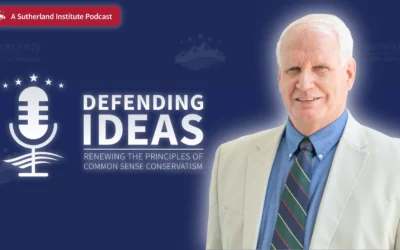
Written by William C. Duncan
April 13, 2023
The floods of 1983 required massive relief efforts to keep floodwaters under some control and to minimize damage. To get help, government leaders turned to churches. A 1983 Time magazine story related some anecdotes, including this one:
One night last week a Forest Service employee stationed in Coldwater Canyon, high above the town of North Ogden, Utah, heard trees snapping and boulders rolling. One hundred residents fled for shelter to a [stake center of The Church of Jesus Christ of Latter-day Saints] moments before a river of mud slithered into three houses. North Ogden Mayor Don Colvin, who is also a … Church officer, informed another church official of the crisis. In less than an hour 200 … volunteers had arrived to reinforce the banks of Coldwater Creek. By 3 a.m., 5,000 sandbags were in place. Says Colvin: “People were out here all night, filling those bags like crazy. We have a fire department, but if we hadn’t had those volunteers, we’d have been in deep trouble.”
The story quotes then-Utah Gov. Scott Matheson as saying the church “has the best grapevine in the world. One phone call to the church triggered the quickest network of activity I’ve ever seen. When you push the button, people come out in droves.”
A KSL retrospective on the flooding suggested that more than the flood damage, people remembered “how the community rallied together.”
Communities can be powerful, particularly in a time of pressing need. As the events of 1983 illustrated, religion can be a powerful force in creating a sense of community. At a recent American Enterprise Institute/Sutherland Institute forum, Salt Lake City Pastor Corey Hodges noted that “communities are important” and faith helps to promote community. He pointed out that “most faith traditions encourage service to others” and that “faith emphasizes care for others less fortunate than ourselves. Faith also encourages “reaching out and looking outward. Faith encourages shared communal responsibilities that benefit the group.”
The Deseret News recently published an inspiring case study involving Tonga following a volcanic eruption and a subsequent tsunami. The story highlights how faith helped Tongans cope with the disaster and its aftermath.
Empirical data demonstrates how helpful religious groups can be in providing disaster relief: “Nearly 75 percent of organizations helping the Federal Emergency Management Agency (FEMA) rebuild communities are faith-based groups.”
With record snowpack in Utah this year, the flooding of 1983 has been the subject of much discussion lately. Lessons learned during the earlier flooding will likely help to prevent the extent of damage experienced decades ago, but if flooding does threaten lives and property, religious communities will likely be at the forefront of relief and prevention efforts. Volunteers from every background and belief will make a big difference, and their efforts will be welcomed. All can appreciate, however, the unique contribution of religious organizations in fostering communities that do so much to help those around them when emergencies arise.
Read More
Protecting property rights against government overreach
While governments can continue to regulate land use, these regulations and fees must be justified by a government interest and proportional to the effect of the development’s impact on that interest.
Do we need to care about the Utah State Board of Education?
For any Utah voters who also feel like K-12 public education is headed in the wrong direction, learning about the candidates running for a seat on the Utah State Board of Education (USBE) is a wise choice this election season.
Defending education choice the right way
Education choice has exploded in popularity across the nation in recent years. So why does it remain a contentious point of debate in some parts of the country?


